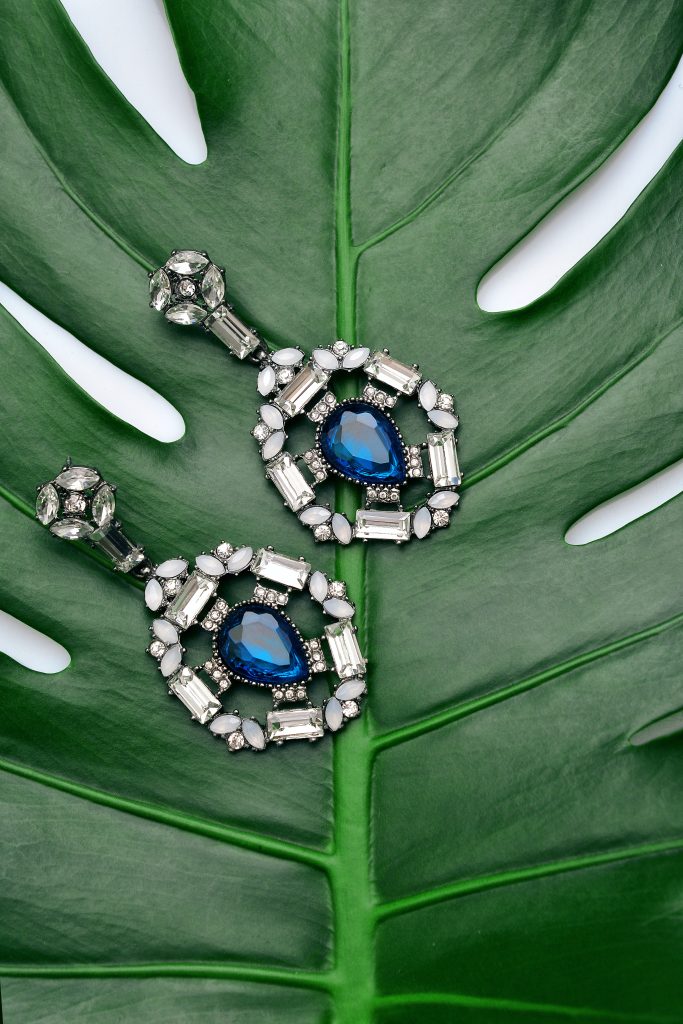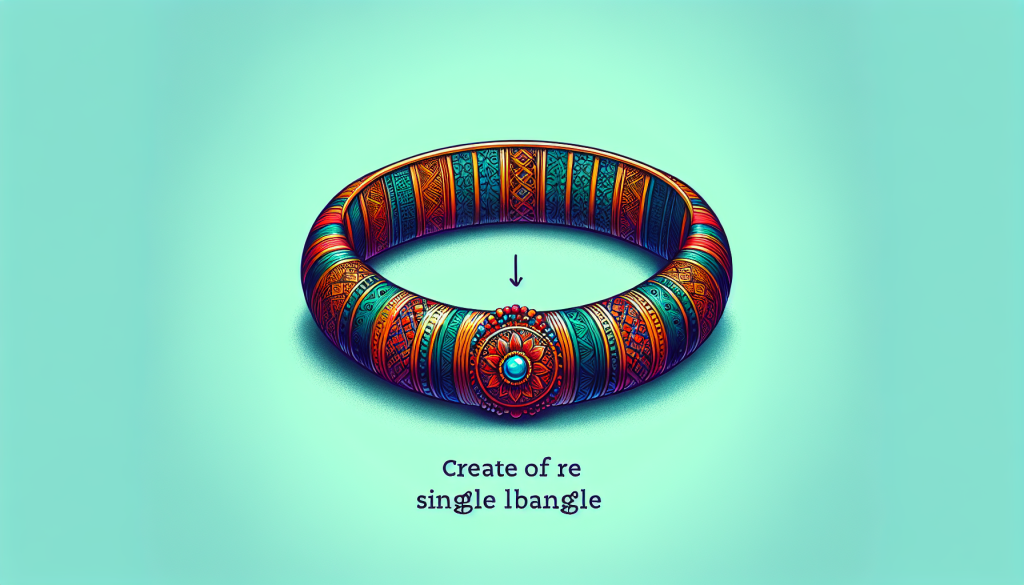Intricately designed and vibrant in colors, bangles hold a significant place in Indian culture. These traditional accessories, often made of glass or metal, carry a deep symbolism that reflects the values and traditions of India. From being symbols of marital status to representing well-being and prosperity, bangles serve as powerful cultural markers ingrained in the lives of Indian women. Embark on a journey through the vibrant world of Indian bangles and uncover the profound meanings they hold within.
Hatori Travel Jewelry Box, PU Leather Small Jewelry Organizer for Women Girls, Portable Mini Travel Case Display Storage Holder Boxes for Stud Earrings, Rings, Necklaces, Bracelets.
43% OffJAMEND CLXP Lotus Leaf Shape Decorative Ring Tray, Small Key Bowl, Ceramic Trinket Tray Jewelry Dish Organizing Necklace Earrings, Home Decoration for Mom Best Friend Sister, Pink.
$7.98 (as of December 18, 2025 20:36 GMT +00:00 - More infoProduct prices and availability are accurate as of the date/time indicated and are subject to change. Any price and availability information displayed on [relevant Amazon Site(s), as applicable] at the time of purchase will apply to the purchase of this product.)Parima Christmas Stocking Stuffers Gifts for Teenage Girls Grandkids, 3 4 5 6 7 8 9 10 11 12 13 14 Year Old Girl Gifts, Gift for Women Travel Jewelry Case Jewelry Box | Letter A, White
(as of December 18, 2025 19:36 GMT +00:00 - More infoProduct prices and availability are accurate as of the date/time indicated and are subject to change. Any price and availability information displayed on [relevant Amazon Site(s), as applicable] at the time of purchase will apply to the purchase of this product.)VOMNA Mini Jewelry Travel Case,Small Jewelry Box,Traveling Jewelry Organizer,Portable Jewellery Storage Holder for Rings Earrings Necklace Bracelet Bangle for Girls Women(Pink - 1 pack)
28% OffVlando Stocking Stuffers for Teen Girls, Travel Jewelry Case for Women, A Initial Jewelry Case, Mini Jewelry Travel Organizer Travel Essentials for Travel Gift Teen Girls - Letter A, Pink
$16.99 (as of December 18, 2025 19:30 GMT +00:00 - More infoProduct prices and availability are accurate as of the date/time indicated and are subject to change. Any price and availability information displayed on [relevant Amazon Site(s), as applicable] at the time of purchase will apply to the purchase of this product.)
Historical significance of bangles in Indian culture
Ancient origins
Bangles have a rich history in Indian culture and their origins can be traced back to ancient times. The practice of wearing bangles dates back to thousands of years, and archaeological evidence suggests that bangles were worn by both men and women in the Indus Valley Civilization. These early bangles were made from various natural materials, such as shells, clay, and even bones.
Symbol of marital status
In Indian culture, bangles hold great significance as a symbol of marital status. Married women in particular are expected to wear bangles as a sign of their commitment and union with their husbands. The absence of bangles on a woman’s wrist can often be interpreted as a lack of marital status or a question about her fidelity.
Traditional attire adornment
Bangles are an integral part of traditional Indian attire for women. They are worn with various traditional outfits such as sarees, lehengas, and salwar kameez. These colorful and vibrant bangles add a touch of elegance and grace to the overall look of the wearer. It is considered incomplete to dress up in traditional attire without the adornment of bangles.
Religious and spiritual significance
Bangles also hold religious and spiritual significance in Indian culture. In Hinduism, bangles are often associated with different deities and are considered auspicious. It is believed that the sound produced by bangles when they clink together wards off evil spirits and brings good luck. Bangles are also worn during religious ceremonies and festivals to invoke blessings from the divine.
Types and materials of bangles in Indian culture
Glass bangles
Glass bangles are one of the most popular types of bangles in Indian culture. They are known for their vibrant colors and intricate designs. Glass bangles are traditionally made by skilled artisans who melt glass rods and mold them into various shapes and sizes. These bangles are often worn in stacks, creating a mesmerizing effect when they catch the light.
Metal bangles
Metal bangles, made from materials such as gold, silver, or brass, are highly valued in Indian culture. These bangles are often considered a symbol of wealth and prosperity. Metal bangles are usually adorned with intricate engravings or studded with precious gemstones. They can be worn on various occasions, from weddings and festivals to everyday wear.
Lac bangles
Lac bangles are crafted from lacquer, a natural resin obtained from insects. These bangles are known for their vibrant colors and delicate patterns. Lac bangles are typically handmade by skilled artisans, who mold the lacquer into different shapes and decorate them with colorful beads or stones. These bangles are favored by women for their lightweight and comfortable nature.
Wooden bangles
Wooden bangles are another popular choice in Indian culture, especially in rural areas. These bangles are made from various types of wood, such as sandalwood, rosewood, or bamboo. Wooden bangles are often hand-carved with intricate designs, reflecting the craftsmanship of the artisans. They are preferred for their natural and earthy appeal.
Shell bangles
Shell bangles are commonly worn by coastal communities in India. These bangles are made from seashells, which are cleaned, polished, and then shaped into bangles. Shell bangles are known for their natural beauty and iridescent colors. They are often worn during beach weddings or as a fashion statement during summers.

Symbolic meanings of different bangle colors
Red bangles
Red is considered a auspicious color in Indian culture and is often associated with love, passion, and fertility. Red bangles are worn by married women as a symbol of prosperity and lifelong commitment. These bangles are often gifted to brides during wedding ceremonies and are believed to bring good fortune to the newlywed couple.
Green bangles
Green bangles symbolize fertility, prosperity, and new beginnings. They are often associated with nature and the harvest season. Green bangles are worn by married women during festivals and special occasions as a symbol of abundance and growth. They are also worn as a fashion statement, especially during the festival of Eid.
Yellow bangles
Yellow is the color of joy and happiness. Yellow bangles are often worn during religious ceremonies and festivals, particularly during the festival of Navratri. Yellow bangles are believed to bring good luck and prosperity to the wearer. They are also associated with the color of turmeric, which has numerous health benefits in Indian culture.
White bangles
White bangles symbolize purity, peace, and spirituality. They are often worn during religious rituals and ceremonies, especially by widows or during mourning periods. White bangles are also worn by women on auspicious occasions such as weddings and childbirth, as they are believed to bring blessings and divine protection.
Gold bangles
Gold bangles are highly valued in Indian culture and are often associated with wealth, status, and prosperity. They are considered a symbol of luxury and are often passed down from one generation to another. Gold bangles are an essential part of bridal trousseaus and are worn during weddings and other special occasions. Their timeless beauty and elegance make them a favorite among women of all ages.
Regional variations in bangle traditions
North Indian bangle traditions
In North India, bangles hold immense cultural significance. The bangle ceremony, known as “Choora,” is an important ritual in Punjabi weddings. The bride’s maternal uncle gifts her a set of ivory or red bangles, known as “choora,” which are worn for a specific period of time to signify the newlywed status. The choora is believed to bring good luck and happiness to the bride’s married life.
South Indian bangle traditions
In South India, the tradition of wearing bangles is deeply rooted in the culture. The bride typically wears a set of green and gold bangles, known as “valayal,” as a symbol of her marital status and prosperity. These bangles are often embellished with intricate designs and are considered an essential part of the bride’s ensemble.
East Indian bangle traditions
East India has its own unique bangle traditions. In West Bengal, married women wear white and red bangles, known as “shankha” and “pola,” respectively. Shankha bangles are made from conch shells and are worn on the right hand, while pola bangles are made from red coral or lac and are worn on the left hand. These bangles are believed to ward off evil spirits and protect the marital bond.
West Indian bangle traditions
In West India, bangles play an important role in various cultural and religious rituals. In Gujarat, women wear vibrant and colorful bangles, known as “patla,” to celebrate Navratri. These bangles are often made from glass and are worn in stacks to create a dazzling effect. In Rajasthan, women wear a specific type of lac bangles called “bridal chooda,” which symbolizes marriage and is worn by newlywed women.

Bangles as cultural and aesthetic fashion statement
Designs and patterns
Bangles come in a wide array of designs and patterns, each representing a unique style and tradition. From simple and elegant designs to intricate and ornate patterns, there is a bangle for every occasion and personal preference. Some bangles are adorned with gemstones, pearls, or enamel work, while others feature delicate filigree or meenakari work. The diverse range of designs allows individuals to express their personal style and showcase their cultural heritage.
Matching bangles with outfits
In Indian culture, it is important to match bangles with the chosen outfit. Women often select bangles that complement the colors or embellishments of their attire. For example, if wearing a red saree, women may choose to wear red and gold bangles to create a harmonious and coordinated look. This attention to detail enhances the overall aesthetic and completes the traditional ensemble.
Celebratory and festive occasions
Bangles are an integral part of celebratory and festive occasions in Indian culture. Whether it is a wedding, festival, or religious ceremony, women adorn their wrists with beautifully crafted bangles. The clinking sound of bangles adds to the joyous atmosphere and signifies the presence of merriment and celebration. These occasions are an opportunity for women to showcase their finest bangles and revel in the cultural traditions.
Bollywood influence on bangle trends
Bollywood, the Indian film industry, has a significant influence on fashion trends in India, including bangles. Many iconic Bollywood actresses have adorned themselves with elaborate bangle sets in their movies, setting trends that are followed by millions of fans. Bollywood movies often feature dance sequences where the actresses wear jingling bangles, which has further contributed to the popularity and appeal of bangles as a fashion statement.
Bangles as a source of economic empowerment
Role of bangle-making communities
Bangle-making is a traditional craft that has been passed down through generations. Various communities, such as artisans and craftsmen, specialize in the art of bangle-making. These skilled individuals contribute to the preservation of ancient techniques and craftsmanship. By engaging in the production of bangles, these communities not only sustain their cultural heritage but also generate income and economic opportunities.
Bangle industry and exports
India has a thriving bangle industry, which caters to both domestic and international markets. The demand for Indian bangles extends beyond the borders and has resulted in significant exports. Indian bangles are highly valued for their craftsmanship, intricate designs, and quality materials. The bangle industry contributes to the Indian economy through exports, creating employment opportunities and boosting the country’s overall economic growth.
Women’s entrepreneurship
The bangle industry has provided numerous opportunities for entrepreneurial women to establish their own businesses. Many women have set up bangle shops, either online or physical, where they curate and sell a wide range of bangles. These women not only contribute to the economic growth but also empower themselves and others by showcasing their creativity and business acumen.

Social and ritual significance of bangles in Indian weddings
Bridal bangles
Bridal bangles hold immense importance in Indian weddings. They are an essential part of the bride’s ensemble and symbolize her transition into married life. Bridal bangles are often elaborate, featuring intricate designs and embellishments. These bangles are accompanied by other bridal adornments, such as henna designs, bridal jewelry, and traditional attire, to create a complete bridal look.
Sakha and Paula bangles
In certain regions of India, particular types of bangles known as “sakha” and “paula” are exchanged during weddings. Sakha bangles are made from ivory and are worn on the bride’s right hand, while paula bangles are made from red coral or lac and are worn on the left hand. These bangles symbolize the bride’s marital status and are revered as a mark of prosperity and fertility.
Kaleera and chooda traditions
In Punjabi weddings, the bride wears kaleeras, which are umbrella-shaped ornaments attached to her bangles. These kaleeras are often made from gold or silver and are adorned with hanging trinkets. They are worn as a part of the bridal ensemble and hold cultural significance. Another tradition followed by Punjabi brides is wearing a set of red and white bangles, known as “choodas,” which are traditionally gifted by the bride’s maternal uncle.
Superstitions and beliefs associated with bangles
Protective and auspicious qualities
Bangles are believed to possess protective and auspicious qualities in Indian culture. It is believed that wearing bangles on the wrists creates a positive energy field around the person, thereby warding off negative energies and evil spirits. The clinking sound produced by bangles is also believed to purify the atmosphere and bring good luck and prosperity.
Bangle-breaking superstition
There is a popular superstition in Indian culture that if a bangle breaks, it signifies an impending danger or an upcoming event. It is believed that the breakage of a bangle can ward off any potential harm or negative impact. This superstition has led to the practice of intentionally breaking a bangle during certain rituals or in times of distress to avert any possible misfortune.
Sati and widowhood symbolism
In the past, bangles also held symbolism related to sati and widowhood. Sati was a practice where a widow would voluntarily burn herself on her husband’s funeral pyre. Widows were often expected to refrain from wearing bangles as a visible symbol of their marital status. However, with the abolition of the practice of sati and changing societal norms, the significance of bangles for widows has evolved, and wearing bangles is no longer strictly associated with widowhood.

Evolution of bangle trends in modern Indian society
Contemporary designs and materials
The bangle industry has witnessed an evolution in terms of designs and materials used. While traditional materials like glass, metals, and lac are still widely used, contemporary bangles now feature innovative materials such as acrylic, plastic, and synthetic materials. Modern designs incorporate elements of Western fashion trends, catering to the diverse tastes and preferences of the younger generation.
Bangles as fashion accessories
Bangles have evolved from being traditional ornaments to fashion accessories in modern Indian society. They are not limited to just traditional attire but are also paired with Western outfits to add a touch of Indian aesthetics. Bangles are now available in a wide range of colors, designs, and sizes, allowing individuals to express their personal style and create unique fashion statements.
Changing perceptions and symbolism
The perception and symbolism associated with bangles have undergone a transformation in modern Indian society. While they continue to hold cultural and traditional significance, bangles are now also seen as a means of self-expression and personal style. Younger generations are embracing bangles as fashion accessories, and the symbolism attached to specific colors and materials is becoming more fluid and open to individual interpretation.
Preservation of bangle traditions in the face of globalization
Revival of traditional craftsmanship
In an era of globalization and modernization, there has been a conscious effort to revive and preserve traditional bangle-making craftsmanship. Artisans and craftsmen are collaborating with cultural organizations and institutions to pass on their skills to the younger generation. Traditional techniques and designs are being documented and promoted, ensuring that the legacy of bangle-making continues to thrive.
Role of cultural organizations
Cultural organizations play a vital role in preserving and promoting bangle traditions. They organize exhibitions, workshops, and events that showcase the craftsmanship and cultural heritage associated with bangles. By creating platforms for artisans and designers, these organizations contribute to the preservation of bangle traditions and provide a market for their creations.
Efforts to sustain bangle-making skills
Various initiatives have been undertaken to sustain bangle-making skills in India. Government programs and schemes focus on skill development and training for artisans, helping them enhance their craft and improve their livelihoods. Non-profit organizations also play a significant role in supporting bangle-making communities by providing access to resources, markets, and financial assistance.
In conclusion, bangles hold a deep-rooted historical, cultural, and social significance in Indian culture. From symbolizing marital status to serving as a fashion statement, bangles have evolved over time while retaining their traditional charm. The diverse range of materials, colors, and designs reflect the rich and vibrant cultural diversity of India. As globalization continues to influence fashion trends, efforts to preserve and promote bangle traditions are crucial in ensuring that this cherished part of Indian culture continues to thrive for generations to come.































